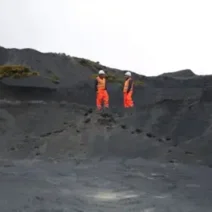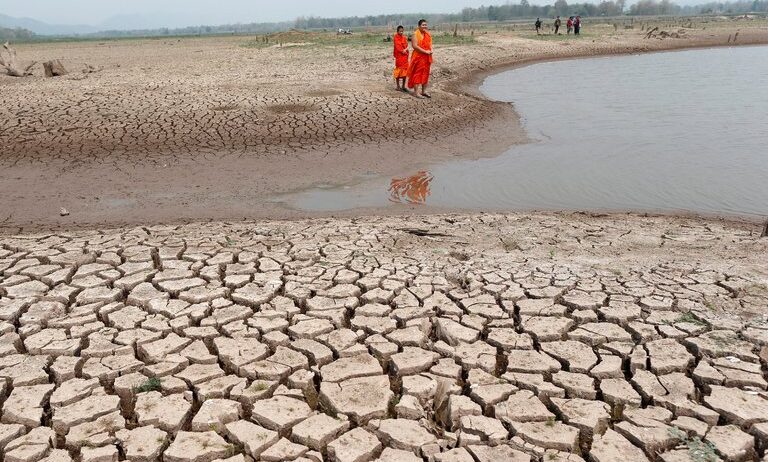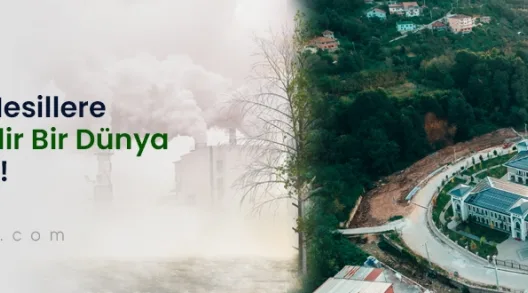Climate change, oftentimes portrayed as a distant menace, is, in actuality, a roaring beast unleashed upon humanity. The repercussions of global warming ripple through our atmosphere, morphing benign weather patterns into cacophonies of extreme conditions. This metamorphosis is not a mere figment; it is evidenced by the increasingly chaotic climate events we witness today. Understanding the nexus between global warming and the tumultuous weather it incites is vital for grasping the full scope of this unrelenting crisis.
To elucidate this complex relationship, we must first comprehend what global warming entails. Essentially, it involves the gradual increase in Earth’s average temperature due to the proliferation of greenhouse gases—like carbon dioxide and methane—largely produced by human activity. These gases form a thickening canopy around our planet, trapping heat much like a blanket enfolding a child in a warm embrace. However, this very embrace tightens dangerously, fostering conditions ripe for extreme weather phenomena.
Extreme weather, in its various avatars, can be likened to an orchestra that has lost its conductor. Tornadoes, hurricanes, floods, and droughts no longer follow the predictable rhythm they once did, instead adopting a more chaotic and often unpredictable nature. The contradiction becomes stark: as the planet warms, the weather, in its whims, becomes exacerbated by the very stability humans have come to rely upon. The dissonance between expectation and reality becomes increasingly palpable: just when we think we have mastered the elements, they remind us of their raw, unbridled power.
One of the most glaring manifestations of this climatic chaos is the increase in the intensity and frequency of hurricanes. A warmer ocean serves as an incubator, providing the energy needed for these storms to swell. As temperatures rise, the capacity of the atmosphere to hold moisture also escalates. This surplus moisture can lead to rainfall volumes unprecedented in recorded history. When cyclonic forces are unleashed, the inundation can leave communities submerged, amplifying the cycle of destruction and despair, pushing them into the quagmire of recovery long after the winds have died down.
Moreover, the occurrence of heatwaves—those searing episodes of unrelenting heat—serves to accentuate the chaotic nature of the warming climate. Once considered occasional aberrations, these extreme heat events have begun to echo with alarming regularity, exacerbating drought conditions and heightening the risk of wildfires that ravage landscapes and communities alike. The interplay between soaring temperatures and parched earth is a poignant reminder of our precarious existence within Earth’s biosphere. Our natural resources, stretched to their limits, reveal their fragility amidst humanity’s growing demands.
Conversely, excessive precipitation, often heralded by torrential rainstorms, further illustrates the capriciousness of climate chaos. The soil, unable to absorb the deluge, can lead to flash floods that wipe away everything in their path. Communities found nestled in low-lying areas face existential threats as water levels rise, engulfing homes and infrastructure. This juxtaposition—where droughts and floods can coexist, creates a narrative of despair that directly challenges the notion of climate predictability. The scars left by excessive water serve as evidence of the atmosphere’s fury, igniting conversations around resilience and adaptation.
As we delve deeper into the symphony of extremes, another instrument that cannot be overlooked is the phenomenon of polar vortex disruptions. These events, where frigid air from the Arctic spills southward, are becoming increasingly pronounced. Warmer air at the poles destabilizes the natural circulation patterns, resulting in anomalous cold outbreaks. Such occurrences have led to chilling temperatures in regions accustomed to milder winters, thereby skewing seasonal norms and creating environments that are inhospitable for various flora and fauna.
The narratives generated by these climatic upheavals are steeped in socio-economic implications. Vulnerable populations and developing nations often bear the brunt of climate change’s whims. It is the marginalized who suffer disproportionately, facing food insecurity, displacement, and health crises, exacerbated by climate-induced anomalies. As the rich tapestry of natural life faces upheaval, human lives are intricately woven into this story of change, forging connections through common resilience against formidable odds.
Addressing climate chaos is not merely an environmental imperative; it is a show of solidarity among humanity. Actions taken today resonate through the corridors of time, shaping the conditions for future generations. Promoting sustainable practices, reducing greenhouse gas emissions, and fostering innovation in renewable energy sources are critical components in responding to this impending crisis. Each incremental effort signals a commitment to harmonizing with the Earth’s rhythms rather than grappling with chaos.
In summary, the relationship between global warming and extreme weather encapsulates a narrative steeped in urgency. As the climate grows increasingly fractious, humans must heed the call to action. Adaptation and mitigation are not mere options; they are necessities. The growth of climate chaos exposes the fragility of our existence, demanding a concerted effort to restore balance and safeguard the future. Our forthcoming decisions will determine whether humanity can navigate the stormy seas of climatic turmoil or remain anchored to the results of our own making. The choice is before us: to be architects of resilience in the face of chaos or to succumb to the tides of our own indifference.







